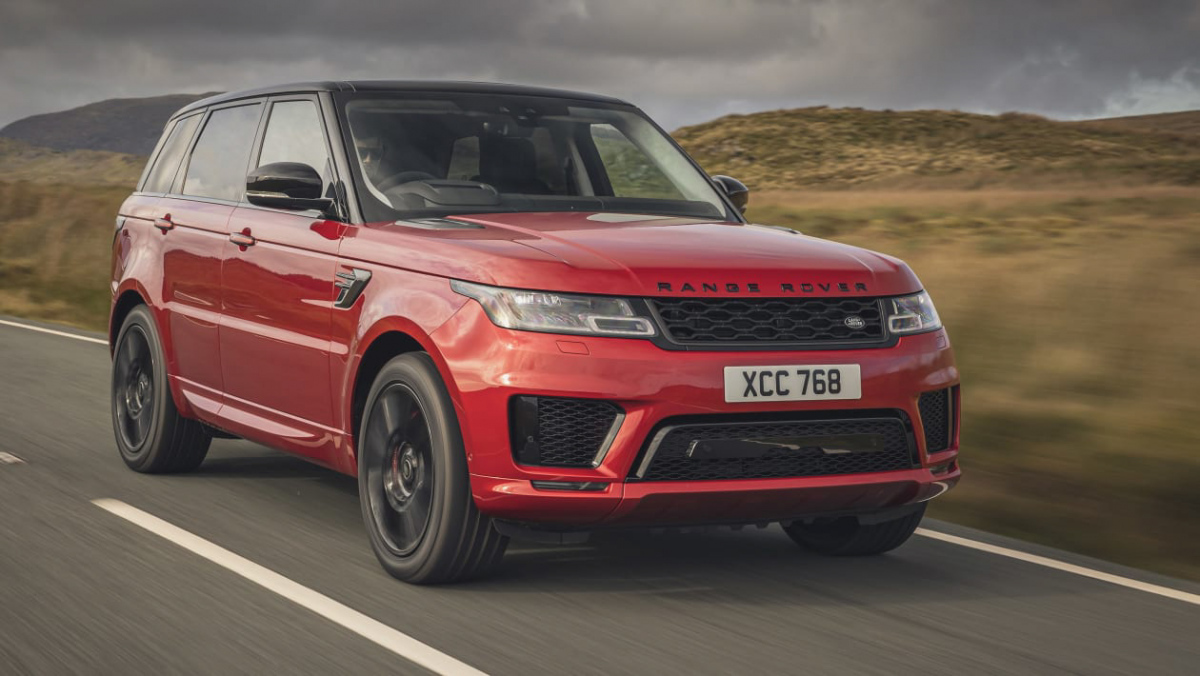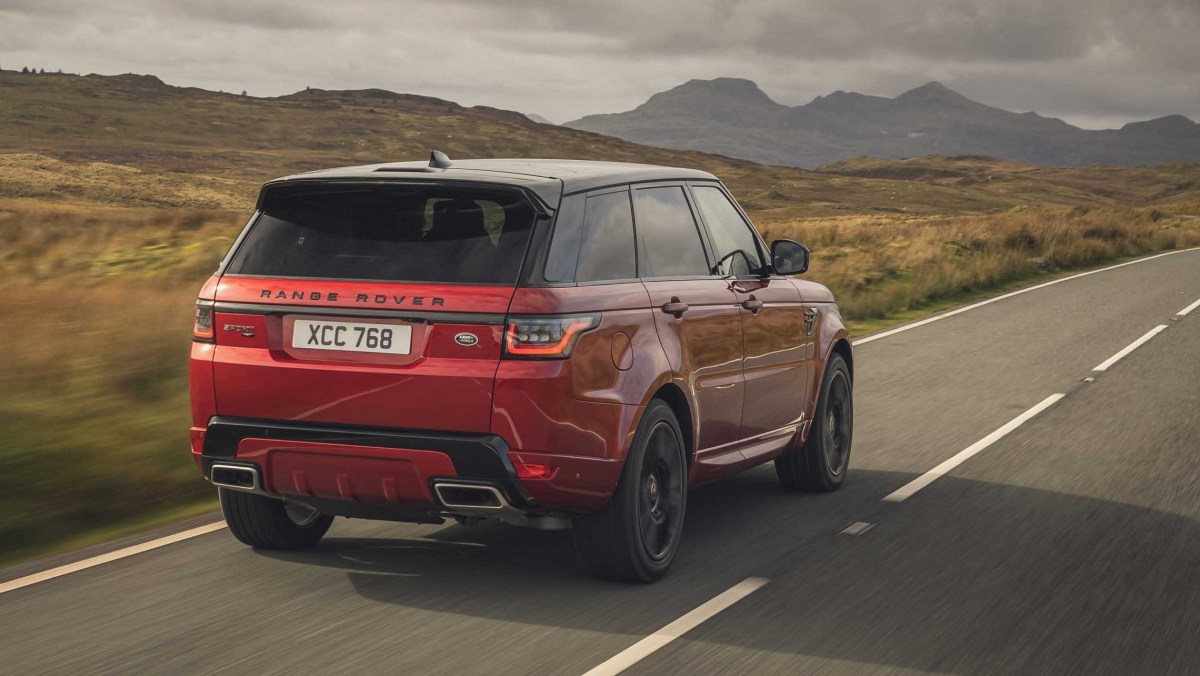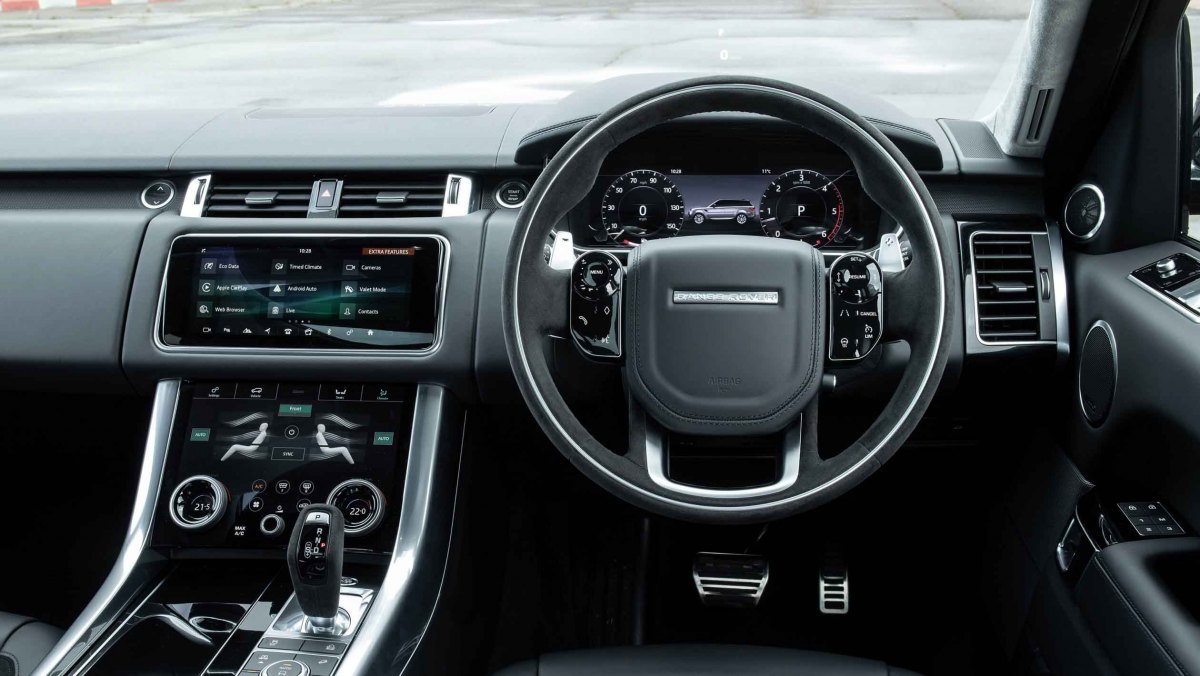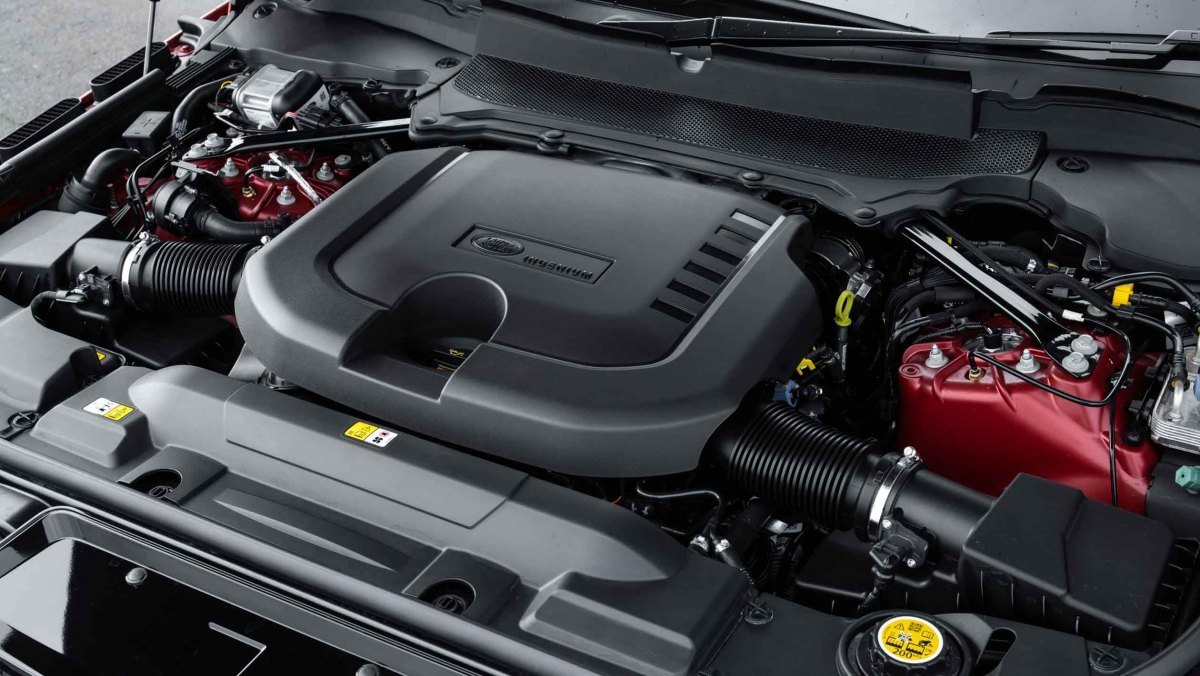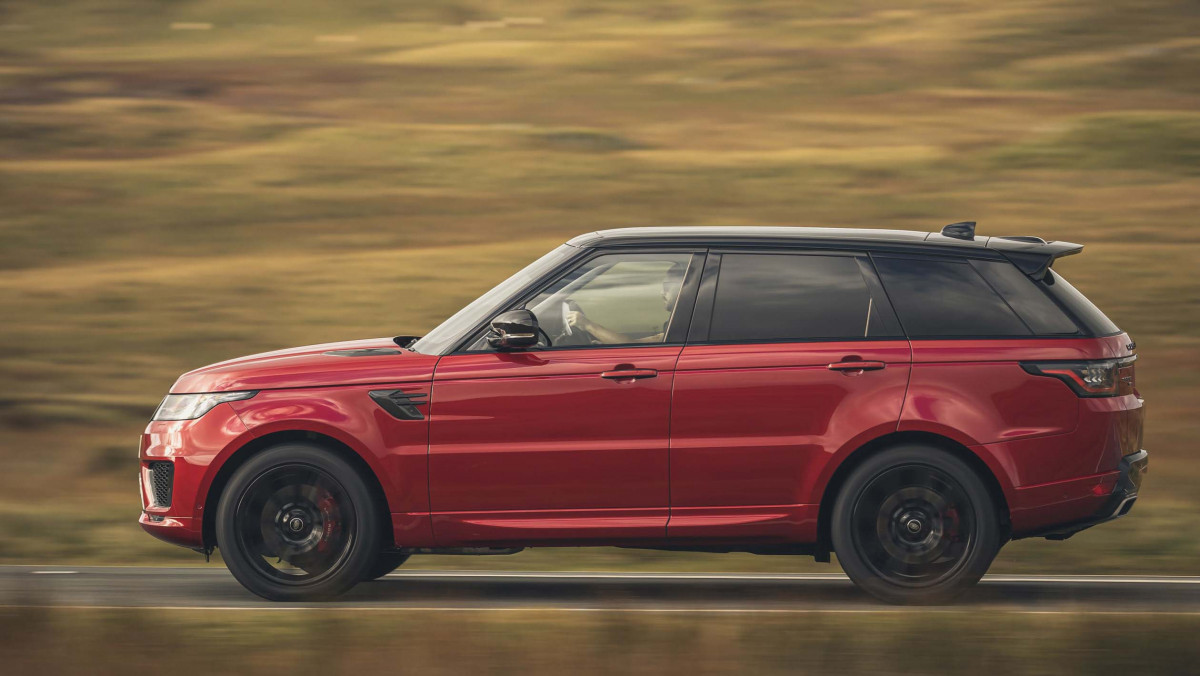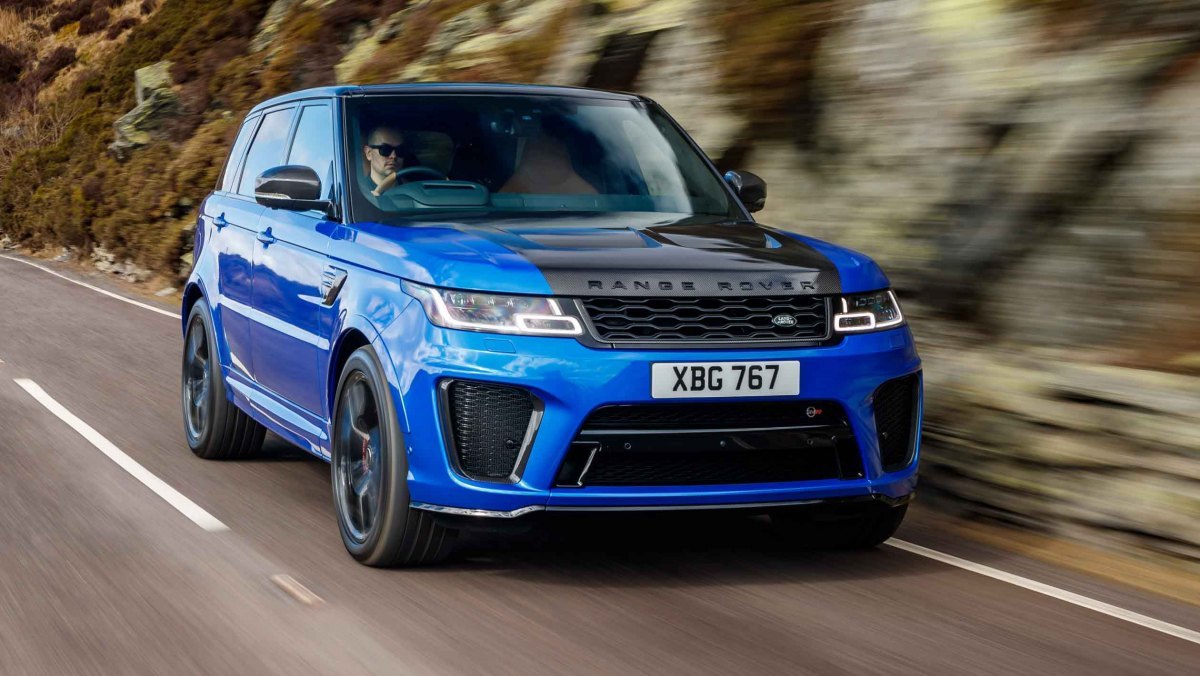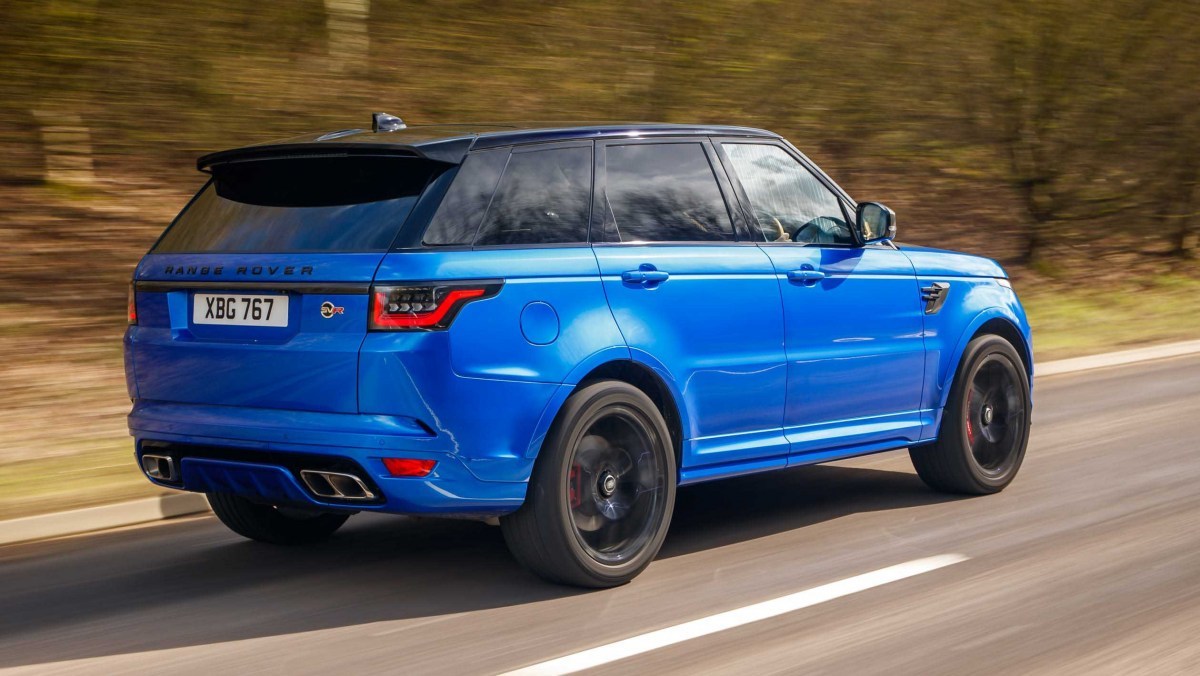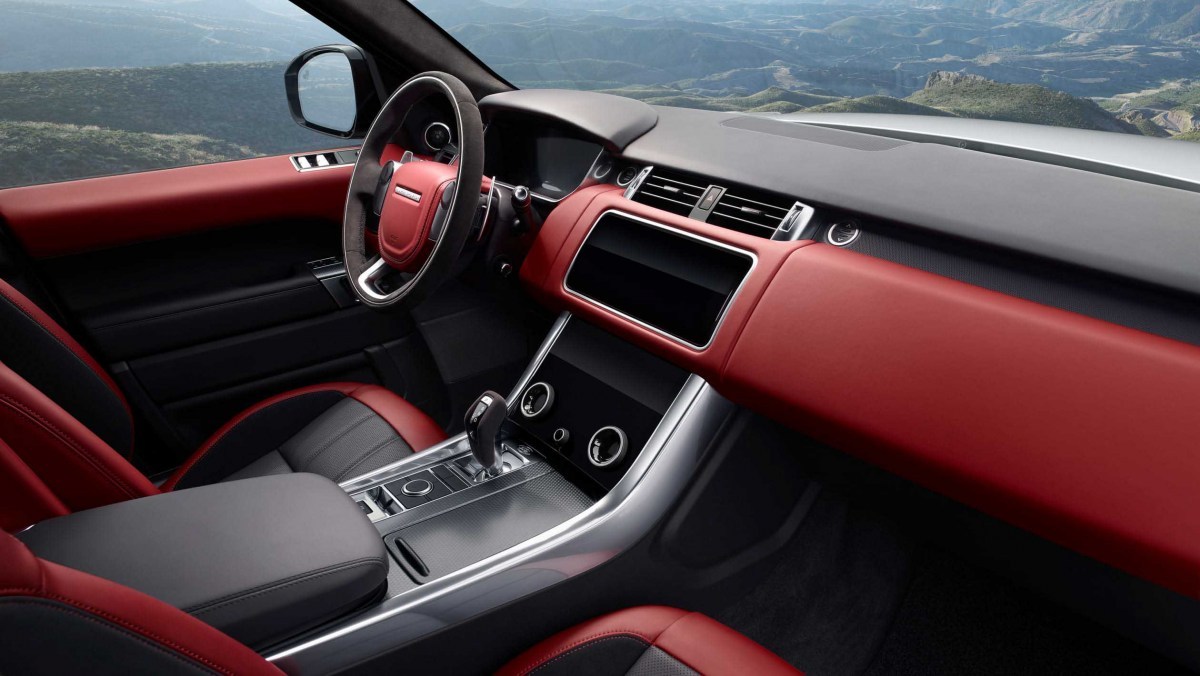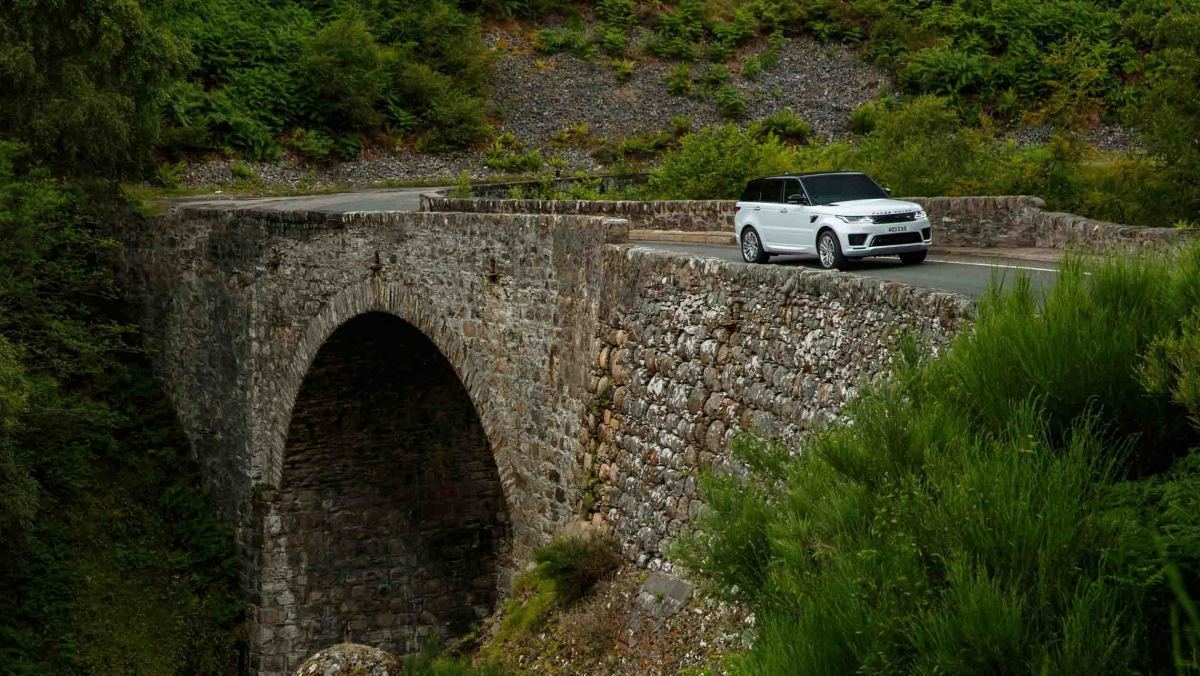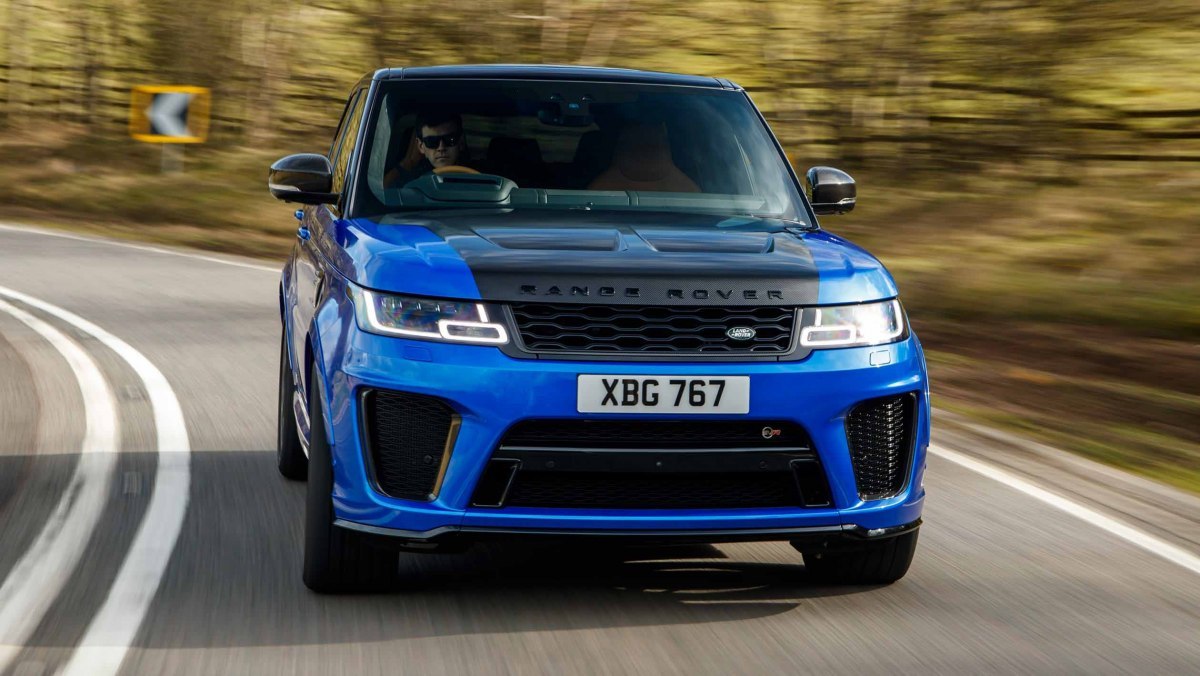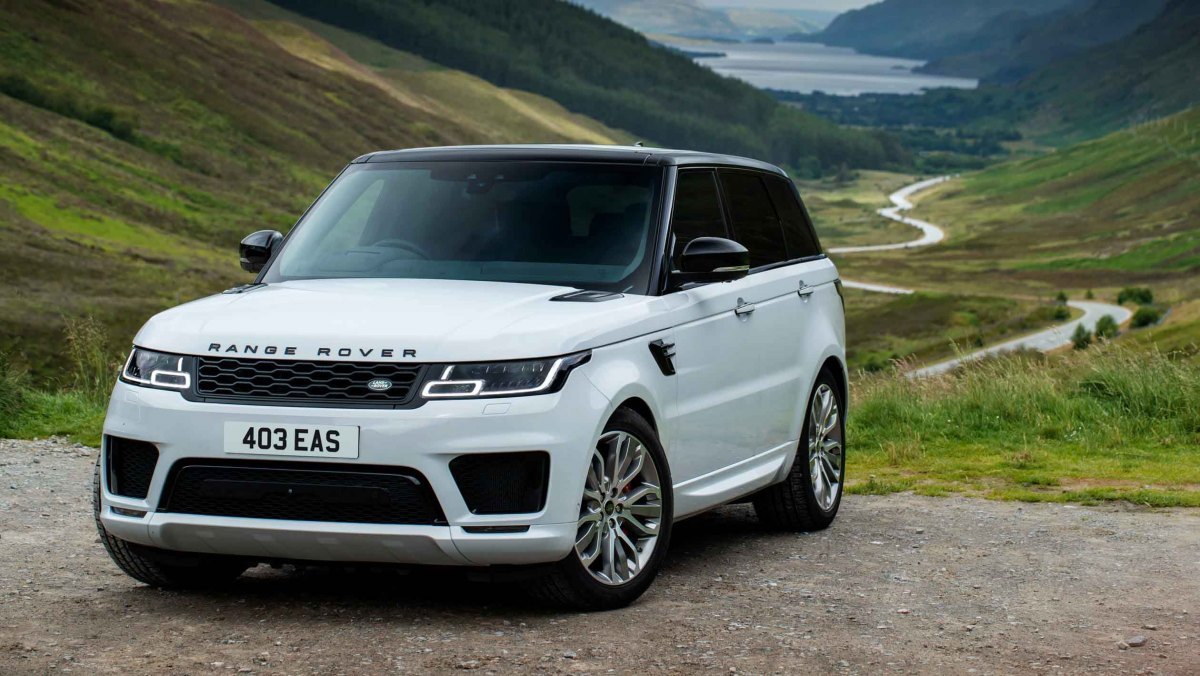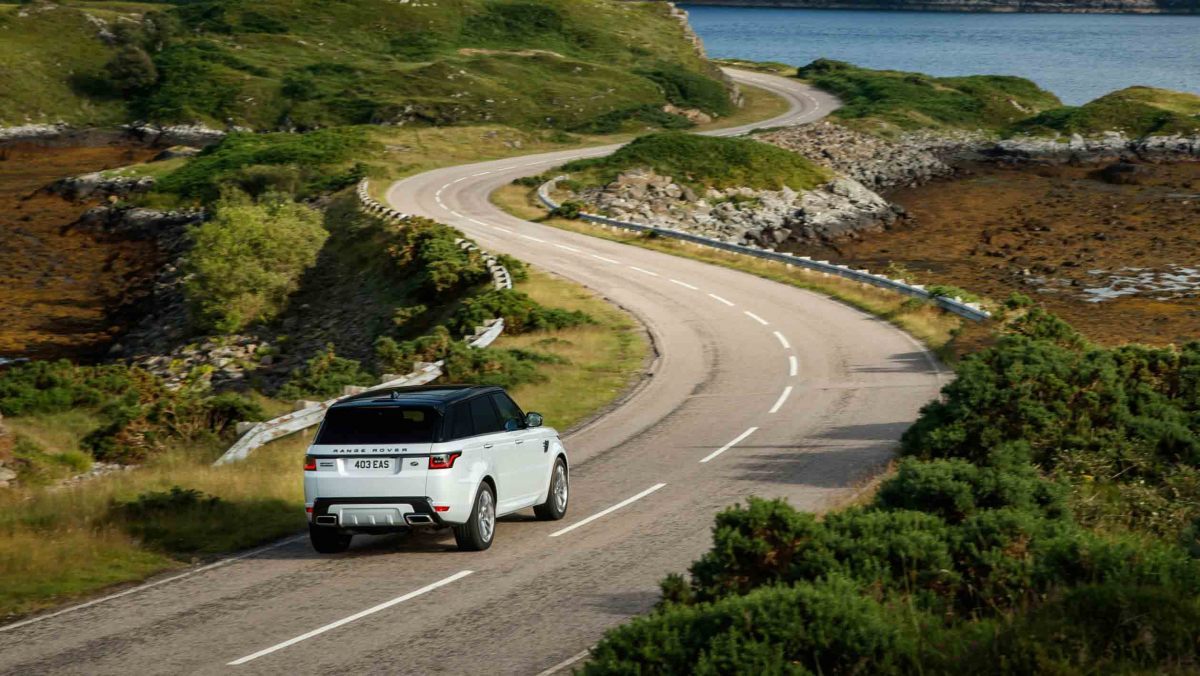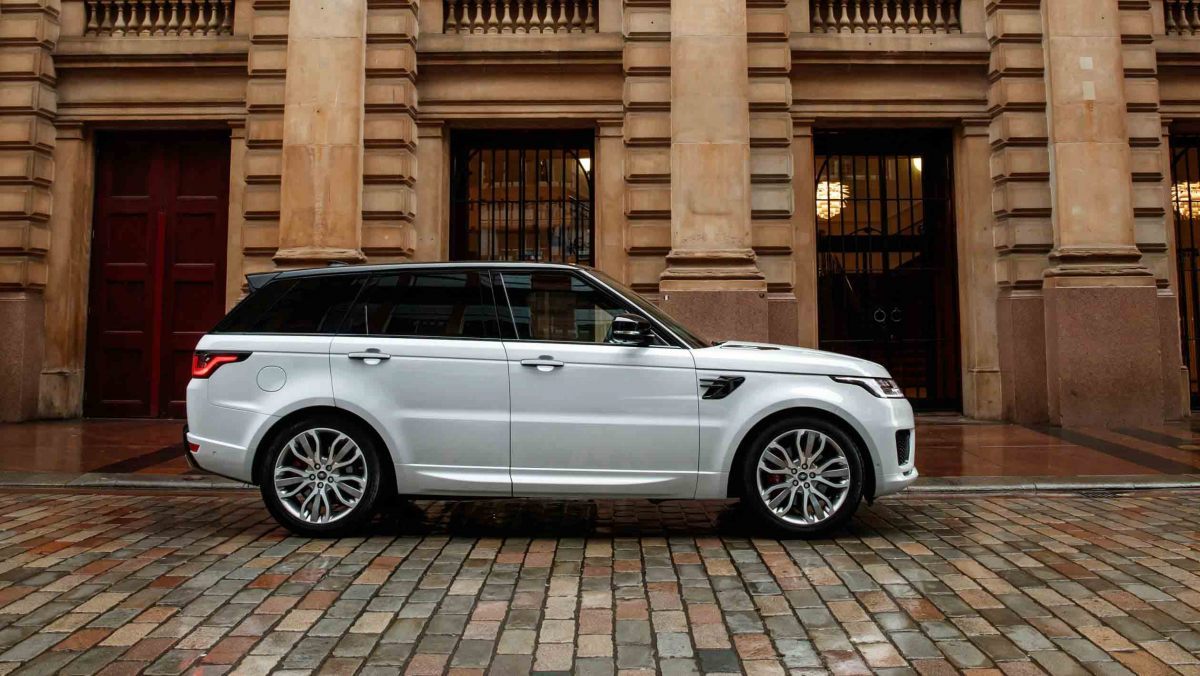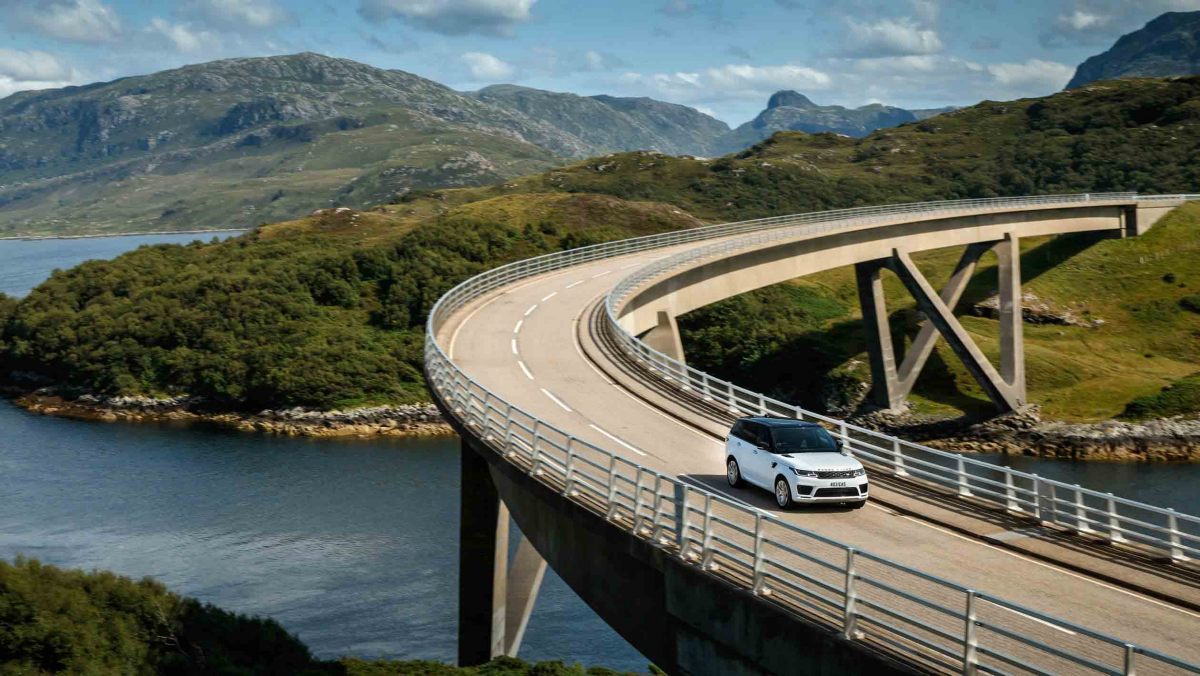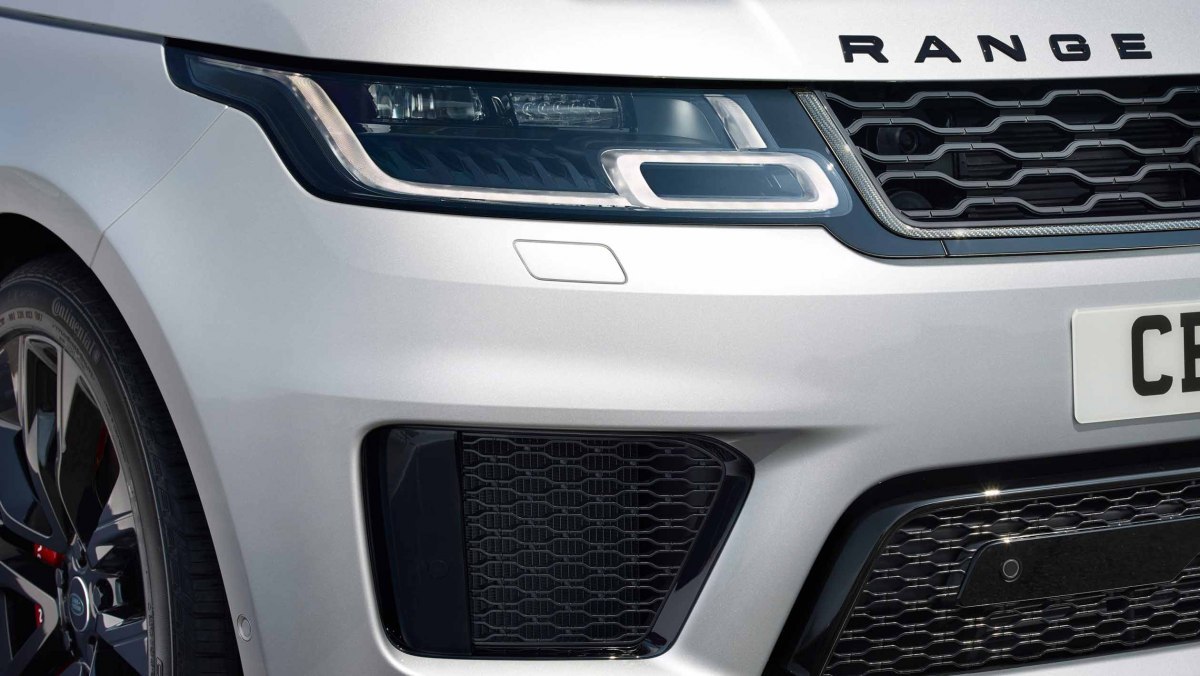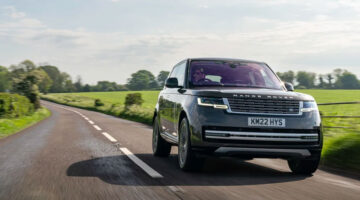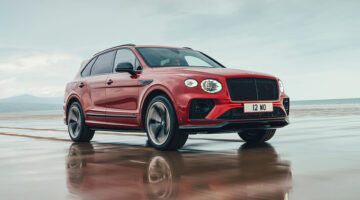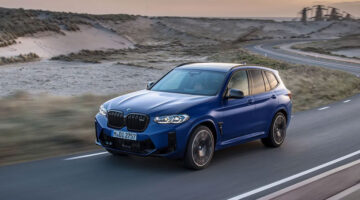A strong combination of full-size Range Rover elements in a more attainable package, but objectively it’s no class-leader
| Drives better than a full-size Range Rover on-road | |
| Tech, efficiency, outright road-holding and performance all inferior to more comparable rivals |
The Range Rover Sport is Land Rover’s direct rival in size, cost and capability to popular premium SUVs like the BMW X5 and Mercedes GLE. This generation of the car has been with us since 2014, but has been continually updated inside and out to keep it in touch with fresher rivals.
The Range Rover Sport was developed with a clear brief to drive better on the road than its full-sized sibling, the Range Rover, without abandoning the off-road capability or the regal on-road demeanor that define the Range Rover brand.
> Aston Martin DBX review – the first performance SUV to deliver on its promise
As part of its 2021 model year update, the Range Rover Sport has received a new in-line six-cylinder diesel engine, replacing the previous V6 and V8 diesels which have long made up the vast majority of European sales. As well as updating the powertrain offering in the region, it also future-proofs the model for the last few years of its lifespan before the all-new Range Rover Sport appears some time in 2022.
The rest of the powertrain range is made up of turbocharged four- and six-cylinder petrols, a plug-in hybrid and a supercharged V8. So, with unmatched off-roading ability plus that Range Rover image underpinning its appeal is the Sport still a contender?
Prices, specs and rivals
The Range Rover Sport starts at over $90,000 for P300 four-cylinder petrol in base HSE trim, with the D300 in-line six diesel starting around the $94,000 mark. The P400 in-line six petrol is next up at $100,000, and the P400e plug-in hybrid is just $2375 more.
All of these ‘base’ engines can be specified all the way up to Autobiography Dynamic trim, which represents a $25,000 price variation from the most basic spec to the flagship. Standard equipment is strong across all models though, highlighted by Matrix LED headlights, leather trim, Land Rover’s Duo Touch Pro digital interface and 20-inch wheels. HSE Silver, HSE Dynamic and HSE Black models then populate the middle ground, adding larger wheels, upgraded interior trim, bigger wheels and the aesthetic variations like black or silver trim packs depending on the model.
For access to the high-powered D350, you’ll have to plump for the HST trim level, which lifts the price to $119,000, while the petrol V8-powered P525 is only available in fully-loaded Autobiography Dynamic trim at $127,000. Only the performance-topping SVR model is available with JLR’s full-fat 567bhp V8, which costs from just under $140,000.
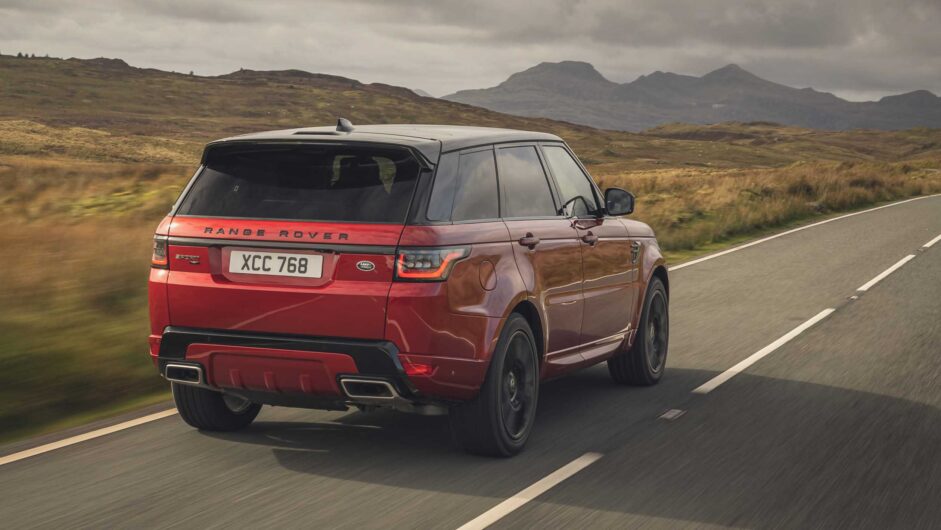
Autobiography Dynamic models build on the HSE trim level with wheels that jump up yet one more inch in size. The standard leather is swapped to the soft semi-aniline finish you’ll find in the full-fat Range Rover, there’s suede-cloth headlining, an updated stereo and various parking aids beyond the standard reversing camera. The HST trim adds some dubious carbonfibre trim elements, while the SVR comes with its own performance-oriented seats, finishes and body styling.
Model-for-model, the Range Rover Sport has always been priced above its BMW, Porsche and Mercedes-Benz rivals, with Porsche and BMW both offering entry-level petrol and diesel volume models that sit close to $83,000. Go for hybrid models and that gap does shrink, particularly with the Porsche. Meanwhile, at the upper end of the spectrum both BMW’s new X5 M and Porsche’s Cayenne Turbo now cost well into six-figures, with the BMW X5 M nudging $180,000 when fitted with the optional ‘Ultimate Package’.
- Performance and 0-100 time
In truth, SUVs don’t need to be this fast. The 519bhp V8 petrol hits 100kph in a claimed 5.3 seconds, but given the startling weight transfer on a full-bore start, it feels faster yet. In most driving scenarios you’ll not get close to unleashing all of its horsepower, but on the occasions you do rev out a couple of its gears, it’s shockingly rapid. The 567bhp SVR model hits 100kph in just 4.5sec, with both the remapped engine and faster-acting transmission explaining the substantial time saving over the lesser V8.
Performance from all the new Ingenium 6 engines is strong, you can thank both the torque-rich nature and slight weight reduction over comparable predecessors. The D300 and D350 reach 100kph in 7.3sec and 6.9sec respectively, while the P400 reduces this further down to just 5.9sec. The plug-in P400e does the same sprint in 6.3sec, which is impressive considering it’s on-the-road weight is approaching 2.6-tons. Even the entry-level P300 petrol makes a decent fist of the 0-100kph sprint, passing the milestone in 7.3sec.
No non-V8 powered Range Rover Sport feels genuinely fast on the road though, not like the latest crop of rivals from BMW, Mercedes or Porsche. While they have continued to trim away excess mass from their respective packages and imbued their powertrains with yet more performance, the Range Rover’s bulk never disappears, making it feel a tad laborious in direct comparison.
- Engine and transmission
Aside from the SVR, the top end of the Range Rover Sport’s engine range is a 519bhp supercharged V8 petrol unit familiar from performance variants of Jaguar saloons and coupes. Its relevance in a car this large and practically-minded is a debate for elsewhere; what’s hard to contest is that it lends the Sport an opulence no diesel engine (no matter how sophisticated) is capable of serving up.
Peak torque arrives at 2500rpm, but throttle response and accelerative thrust are impressive before this point in the rev range. It’s a hugely flexible engine, and despite having a claimed 2335kg to shift (2469kg on our scales), it never feels short on power. In fact, with third gear not reaching its rev limit until beyond 137kph, you’ll rarely use more than half-throttle in smooth, measured driving.
The ZF automatic gearbox is perfectly suited to the car, and there aren’t many scenarios that call for you to switch from its standard Drive to Sport mode, or to use its steering wheel-mounted paddles to swap ratios yourself. Should you decide to push the Sport harder, though, flicking between its eight gears is pretty intuitive.
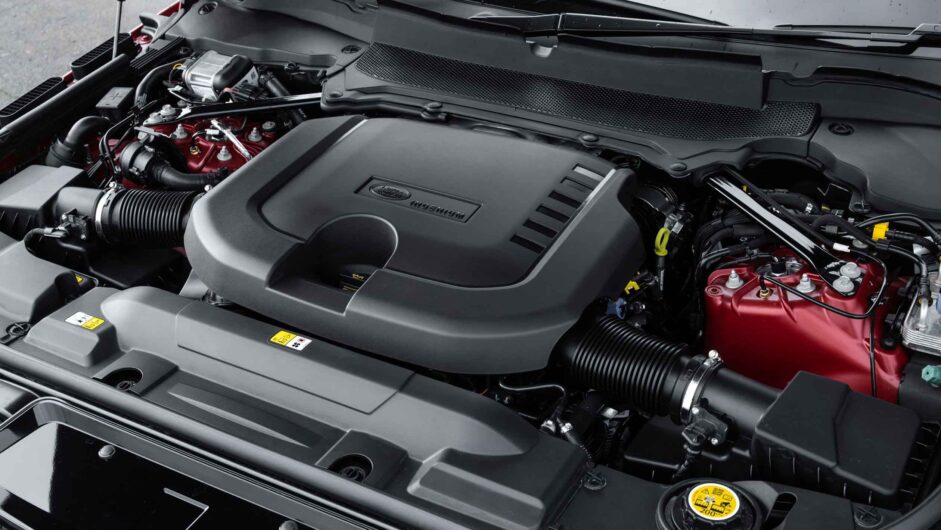
Other engine options include a 296bhp or 345bhp 3-litre straight-six diesel, a 394bhp plug-in hybrid, which pairs a four-cylinder petrol with an electric motor and battery pack, a 394bhp straight-six petrol and a base-level 297bhp four-cylinder turbo petrol without the associated hybrid gubbins. Both six-cylinder engines are boosted by a subtle mild-hybrid system that does more for response than outright power.
When talking about an SUV pushing on for 2.5-tons, torque is the name of the game rather than top end power. The new Ingenium 6 diesel engine is ideal in this respect, building huge torque figures relative to its size.
There are two choices of four-wheel-drive systems, both of them permanent. A more off-road minded option offers up high and low range gearing, and in regular conditions, splits power 50/50 between the car’s axles, but can send 100 per cent of its power to either when required. Alternatively, a more road-biased option is simpler, with a single-speed transfer case, and a standard 42/58 front/rear torque split, with the potential for up to 62 or 78 per cent of power to go to front or rear axles respectively when required. This system is also 18kg lighter.
- Ride and handling
While its performance might justify the Sport branding, a 2.5-ton kerb weight and a very high centre of gravity mean its dynamics were always going to face a tough test doing the same. Compared to the sharpest large SUV on sale, Porsche’s Cayenne, this is a car that can’t help but feel a little aloof, and it never shrugs off its bulk or shrinks around the driver quite like its German rival.
Yet with the assistance of the active locking differential that’s fitted to the rear axle in more powerful variants, and switched into its more focused dynamic mode (accessed by a rotary dial which also switches between the car’s varying ‘Terrain Response’ modes, it sharpens up the steering, damping and throttle response and loosens the stability control), it can demonstrate a remarkably tail-led balance when really pushed. It’s not a car that feels natural driven at (or slightly beyond) its limits, though, and a calmer, slow-in, fast-out approach to corners helps quell understeer and imbue the car with a more natural flow.
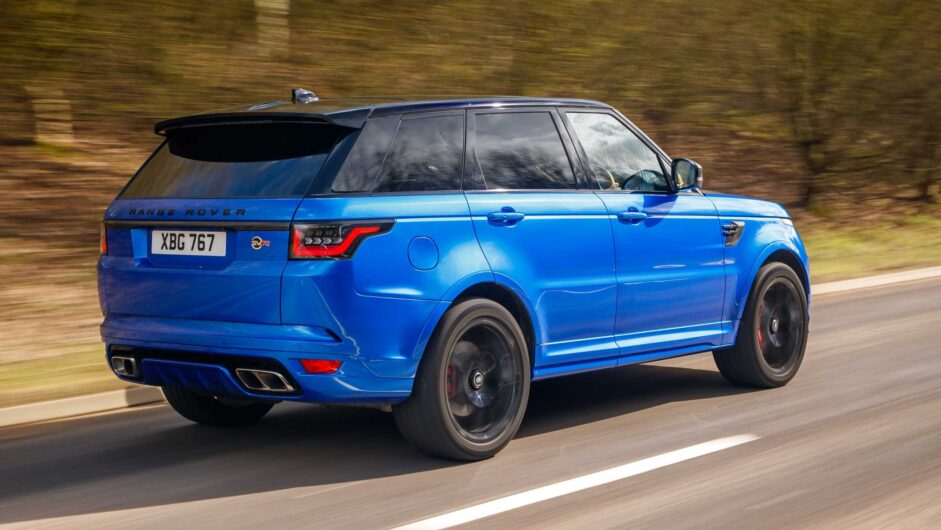
Of more importance to many buyers will be ride quality, and on the whole the Range Rover Sport impresses. From the driver’s seat it’s an extremely cossetting thing to pilot, and long journeys are dispatched with ease thanks to its smooth ride (Land Rover claims class-leading wheel travel) and exemplary noise insulation. Things aren’t quite as relaxing in the back, where the car’s reaction to bumps is more clearly felt, while at typical motorway cruising speed the roar of the rear tyres can creep into the cabin over some road surfaces.
- L/100km and running costs
A behemoth SUV with the option of a supercharged V8 petrol engine is never going to be a running cost champion, but there are concessions to fuel economy, with stop/start fitted to all models. Still, barely breaking 14.1L/100km in P525 form and dipping to 15.1L/100km for the SVR is hardly impressive, but it comes with the territory.
At the other end of the spectrum is the plug-in, which is rated at a claimed 3.2L/100km on the WLTP cycle, but as always a plug-in hybrid’s efficiency is intrinsically linked to how often it’s charged at a plug point and the length of the journeys you undertake.
Mainstream D300 and D350 diesels return between 8.3L/100km and 9.3L/100km depending on the cycle and wheel choice, a figure which is genuinely achievable. P300 four-cylinder and P400 six-cylinder turbocharged petrols sit at 11.3L/100km and 10.9L/100km respectively, giving you some idea as to how hard that P300 engine has to work to get its mass moving.
All versions sit in high insurance groups, the lowest being 43, the supercharged V8s sitting one rung below the maximum, in group 49. This makes it no worse than its rivals, though. The manufacturer warranty lasts for three years with unlimited mileage, while the service interval is 25,000 kilometers.
- Interior and tech
Despite the Range Rover Sport’s age the interior is still fabulous, characterised by sumptuous high-quality materials and a sense of occasion that’s missing in German rivals. The seats are plush and comfortable and the dash is laid out simply with a slick integration of tech, even if it is a generation or two behind some rivals.
Alongside the Sport’s mid-cycle update in 2018 came a new lower touchscreen interface, which controls the air-conditioning and heated seats, while also extending operation of the Terrain Response system. On the whole it works well, with clear press points and a pleasing lack of menus. The physical control turn knobs integratied into the screen itself is a nice detail and most other operations are carried out via the sat nav and media function touchscreen above.
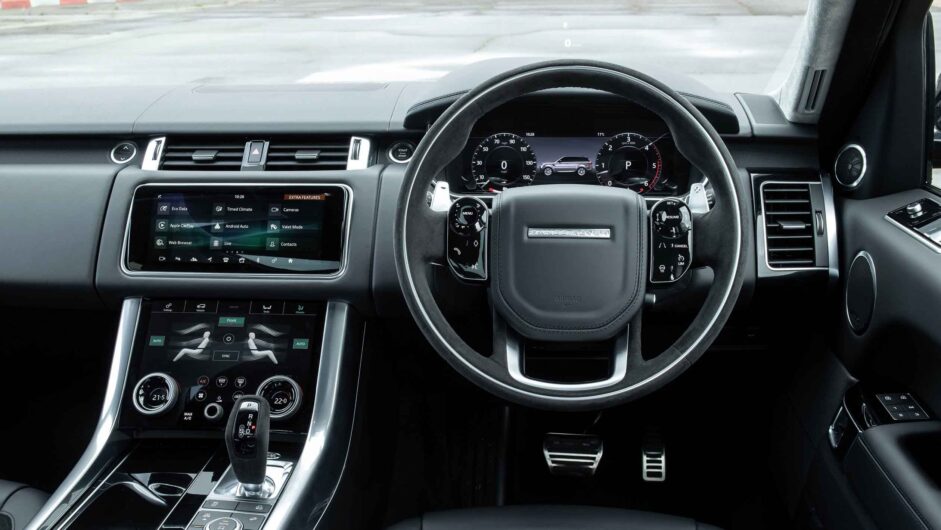
The main bugbear is the infotainment system itself, which uses older software rather than the new Pivi system being rolled out across the range. In isolation, it does an acceptable job, but compared to equivalent systems in any of its rivals from Audi, BMW, Porsche or Mercedes, it is inescapably old hat in its appearance and speed of operation.
Aside from a gear selector borrowed from the Jaguar F-type, there are no real visual flourishes to acknowledge this Range Rover’s sporting remit inside. Instead the difference is felt in your position within the cabin, with a slightly lower seat, narrower windows and a less imperious view over the bonnet. That’s not necessarily a criticism; everything is well appointed, the driving position feels infinitely adjustable and space is abundant, to the benefit of practicality and comfort. Four adults will have more than enough room, five if the extra occupant isn’t too tall. The Sport also trumps the standard Range Rover by offering a ‘5+2’ seven-seat option, though the rearmost pews are aimed at children.
- Design
Like the full-sized Range Rover, the Sport is instantly identifiable on the road thanks to a whole range of typical design motifs that have been a feature of Range Rovers since the original in 1970. The blacked-out pillars, floating roof and horizontal grille elements are all there, and presented in a more dynamic fashion driven by a faster rake to the front and rear screens and a thinner glasshouse.
While the Range Rover Sport is handsome, its relative ubiquity on the road and the existence of more contemporary counterparts within the Land Rover range make it look its age. Visually, you’d think it was a generation behind Land Rover’s latest models, and it is.
In keeping with customer requirements at this level, one can choose a multitude of different exterior design elements, trims and a new extended body-colour range to personalise the Range Rover Sport’s aesthetic. This makes it possible to specify a Range Rover Sport with cabin decor befitting any taste from Orange County heiress to London grime artist. Luckily, it isn’t actually as specification sensitive as some rivals.
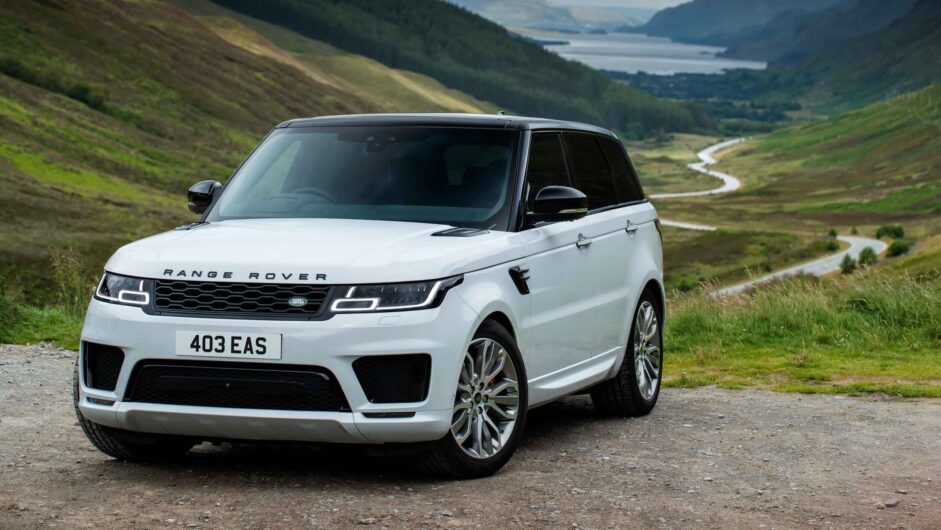
This article originally appeared at evo.co.uk
Copyright © evo UK, Dennis Publishing

